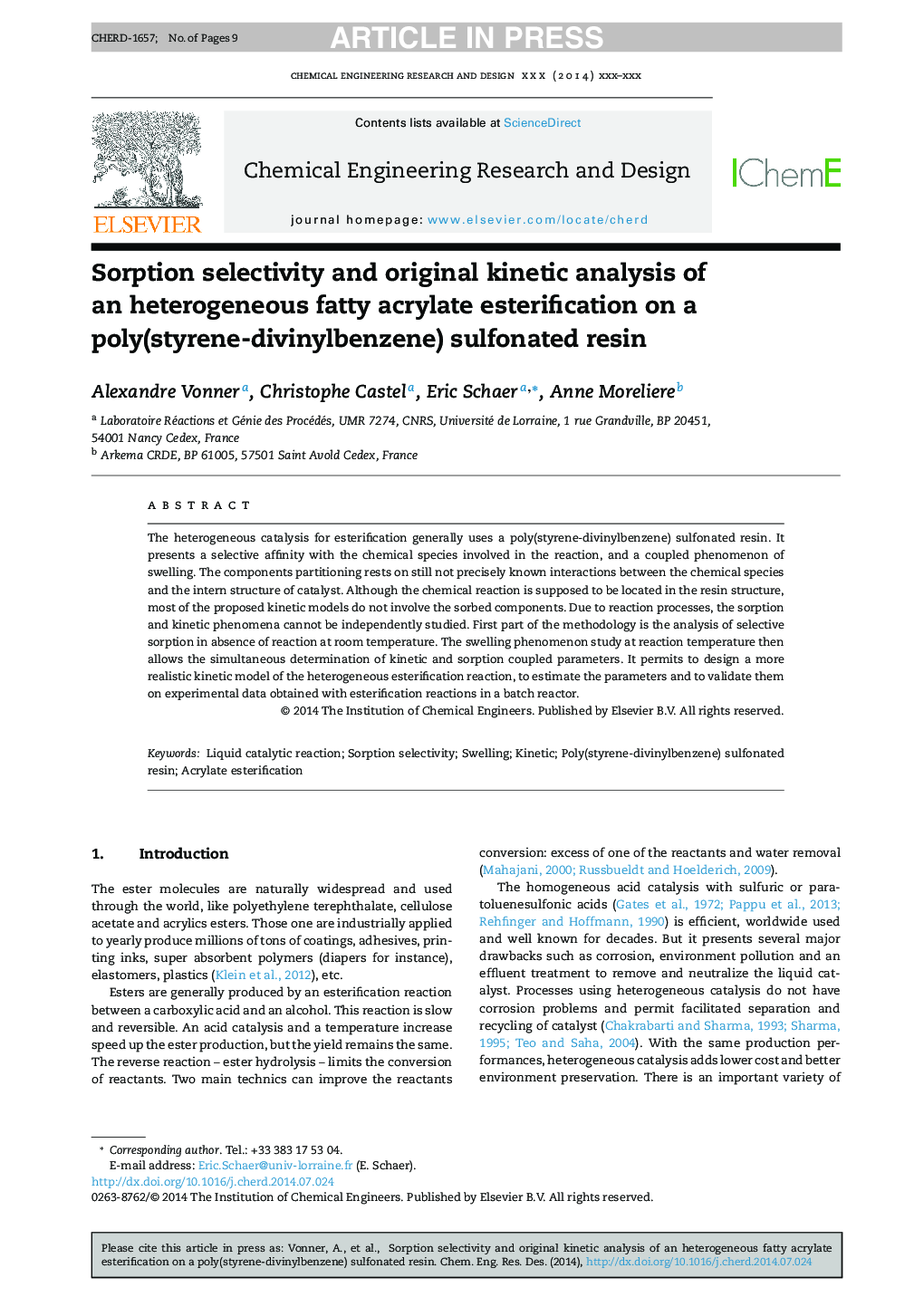| Article ID | Journal | Published Year | Pages | File Type |
|---|---|---|---|---|
| 7007549 | Chemical Engineering Research and Design | 2015 | 9 Pages |
Abstract
The heterogeneous catalysis for esterification generally uses a poly(styrene-divinylbenzene) sulfonated resin. It presents a selective affinity with the chemical species involved in the reaction, and a coupled phenomenon of swelling. The components partitioning rests on still not precisely known interactions between the chemical species and the intern structure of catalyst. Although the chemical reaction is supposed to be located in the resin structure, most of the proposed kinetic models do not involve the sorbed components. Due to reaction processes, the sorption and kinetic phenomena cannot be independently studied. First part of the methodology is the analysis of selective sorption in absence of reaction at room temperature. The swelling phenomenon study at reaction temperature then allows the simultaneous determination of kinetic and sorption coupled parameters. It permits to design a more realistic kinetic model of the heterogeneous esterification reaction, to estimate the parameters and to validate them on experimental data obtained with esterification reactions in a batch reactor.
Keywords
Related Topics
Physical Sciences and Engineering
Chemical Engineering
Filtration and Separation
Authors
Alexandre Vonner, Christophe Castel, Eric Schaer, Anne Moreliere,
